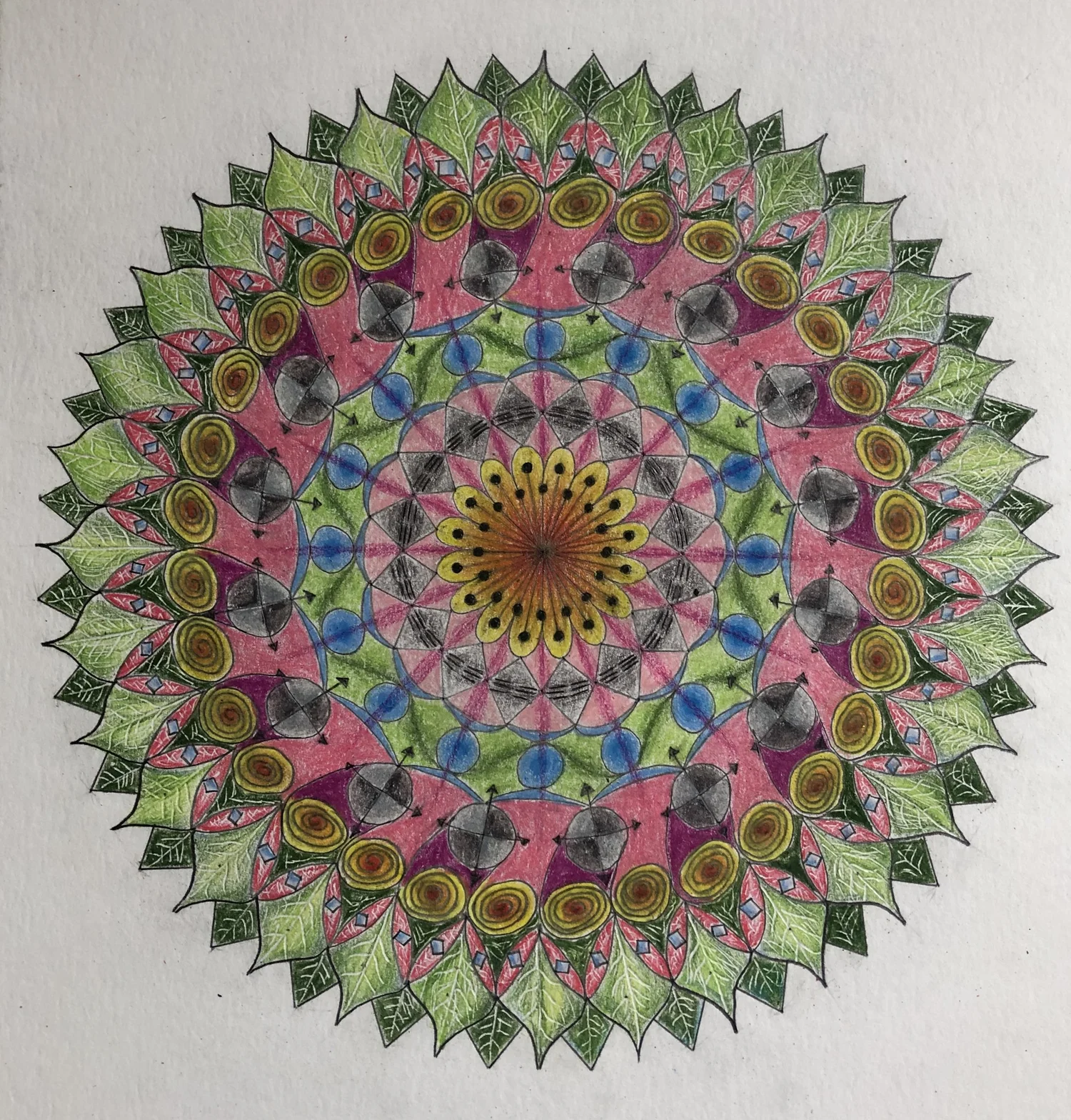How to hold mandala sessions
Holding mandala sessions as a spiritual practice is a beautiful way to facilitate personal growth, community, and mindfulness. Here’s a guide on how to create and host these sessions, focusing on creating a sacred space, guiding participants through the mandala creation process, and incorporating elements that enrich the spiritual experience.
Preparing for the Session
Define the Purpose: Clearly define the intention behind the session. Is it for relaxation, meditation, self-discovery, or healing? Your intention will shape the session's structure and atmosphere.
Create a Comfortable Space: Choose a quiet, comfortable, and well-lit space where participants can sit and work for extended periods. Arrange seating in a circle to promote a sense of community and equality.
Gather Materials: Provide a variety of materials such as paper, compasses, rulers, pencils, erasers, colored pencils, markers, and any other drawing tools you find suitable. Consider the symbolic meanings of colors and shapes when choosing materials.
Set the Atmosphere: Use elements like soft lighting, candles, incense, and calming music to create a serene environment. You might also include natural elements like flowers or stones to enhance the connection to the Earth.
During the Session
Welcome and Introduction: Start with a warm welcome and introduce the concept of mandalas. Explain their historical and spiritual significance, and the purpose of the session.
Guided Meditation or Centering Exercise: Begin with a short meditation or breathing exercise to help participants center themselves and connect with their inner creativity and spirituality.
Setting Intentions: Invite participants to set a personal intention for their mandala creation. This could be a word, feeling, or phrase that they want to embody or explore during the session.
Instruction and Guidance: Offer a basic tutorial on how to start a mandala, emphasizing that there is no right or wrong way to create. Encourage intuitive selection of shapes, patterns, and colors.
Creation Time: Allow ample time for the drawing process, ensuring a quiet and supportive atmosphere. Walk around to offer support and encouragement, reminding participants to focus on their intentions and the act of creation rather than the outcome.
Sharing and Reflection: At the end, facilitate a sharing circle where participants can talk about their experience, the process, and any insights or feelings that arose during the creation of their mandalas. Ensure this is a non-judgmental space where all experiences are valued.
Enhancing the Spiritual Aspect
Incorporate Ritual Elements: Consider integrating rituals such as lighting a candle at the beginning to symbolize the start of a sacred time, or creating a collective mandala as a group before individual work begins.
Use Symbolism: Educate participants about the symbolism in mandalas, such as the significance of the center point, the use of circles and squares, and the meanings of different colors and shapes.
Invite Mindfulness: Encourage participants to be fully present during the session, noticing each stroke and color, and observing their thoughts and emotions without judgment.
Close with Gratitude: End the session with a moment of gratitude, acknowledging the shared time, the effort put into the mandalas, and any personal insights gained.
After the Session
Follow-up: Offer resources for further exploration of mandala drawing and spirituality. You might also create a community platform where participants can share their mandalas and experiences.
Personal Reflection: Take some time for your own reflection on how the session went, what you learned, and how you might improve future sessions.
By creating a supportive, sacred space and guiding participants through the process with mindfulness and intention, mandala sessions can become a powerful spiritual practice that fosters self-expression, healing, and community.
